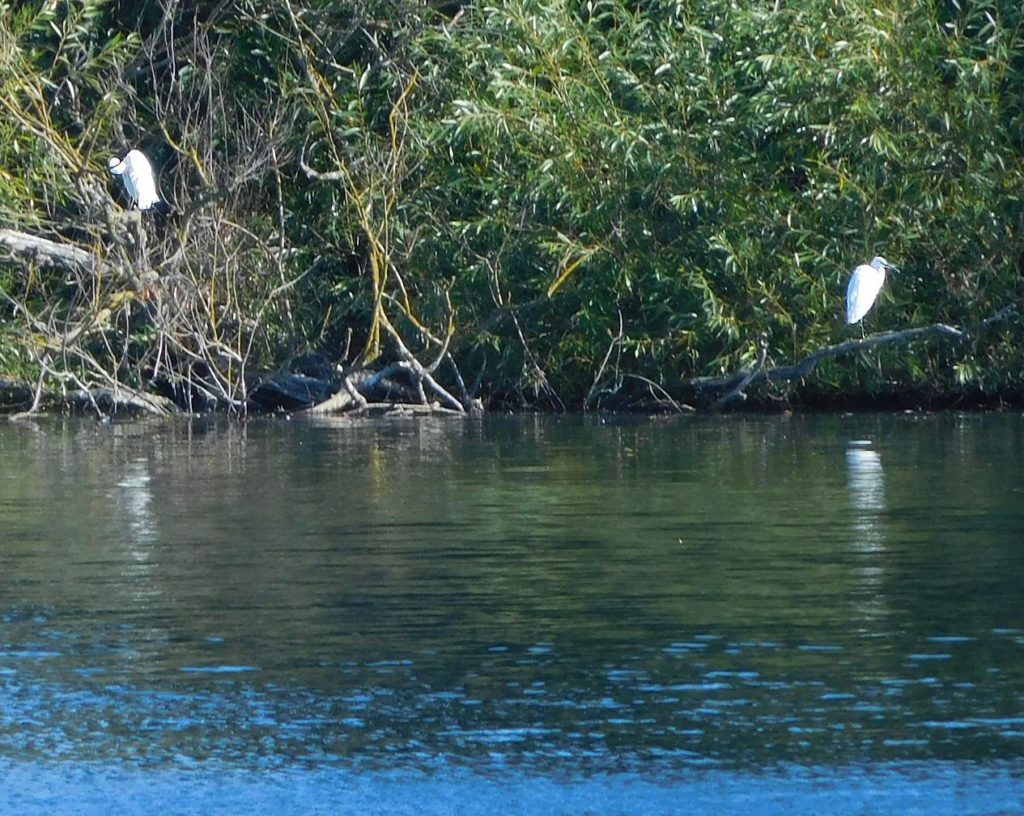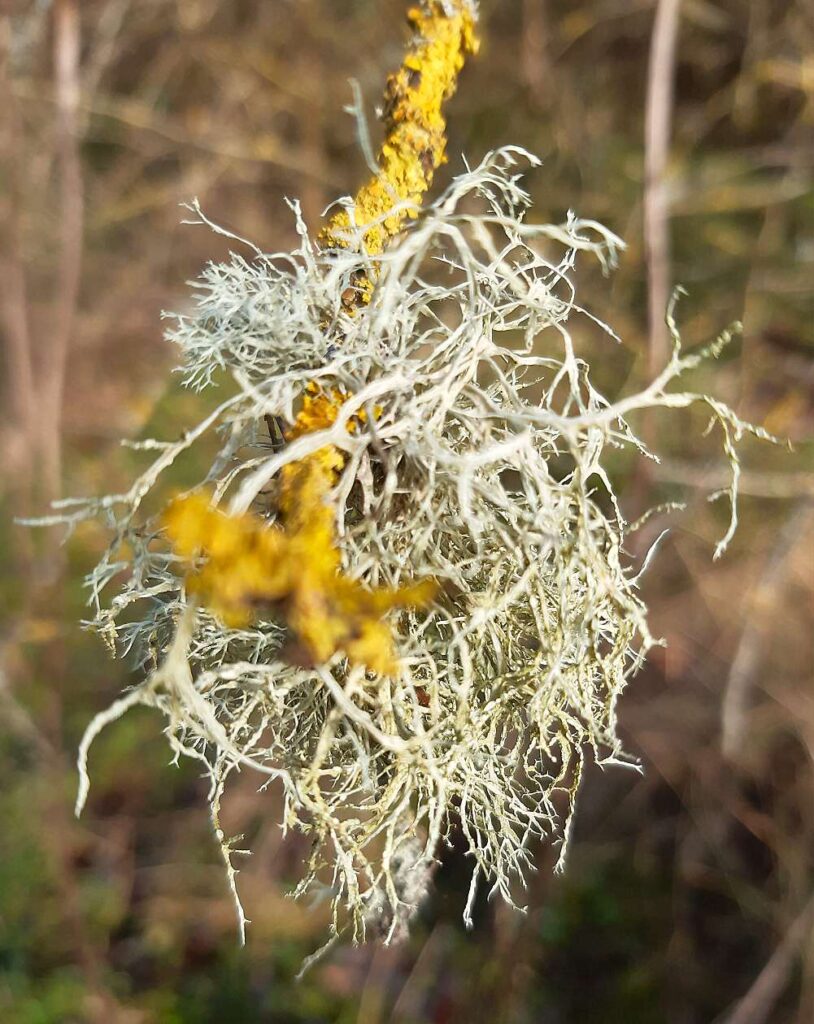
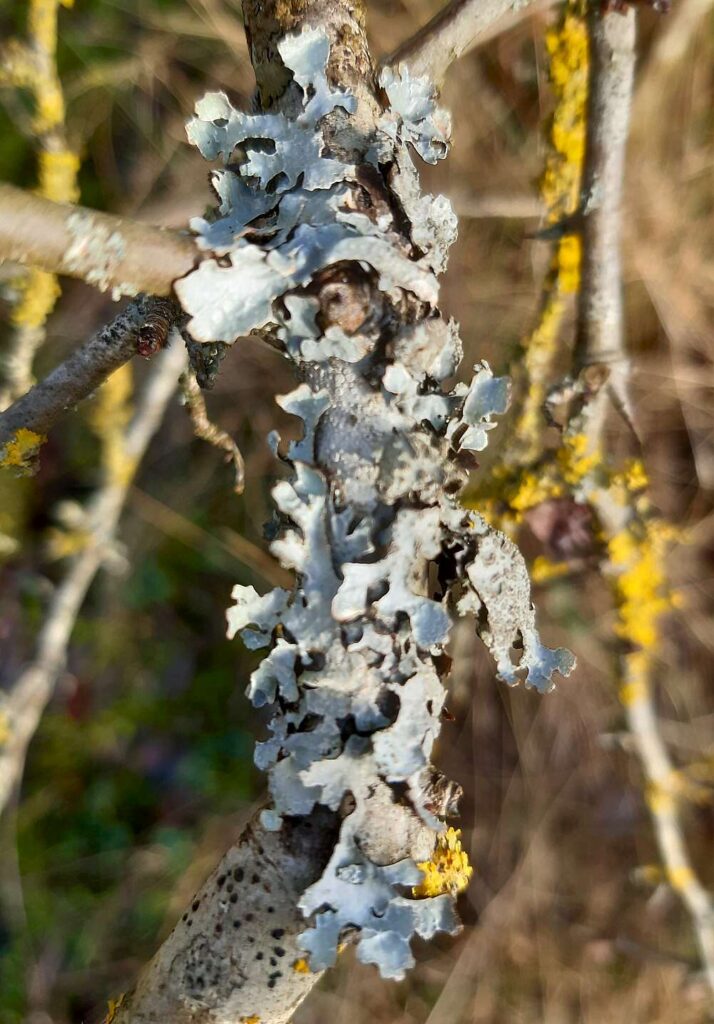
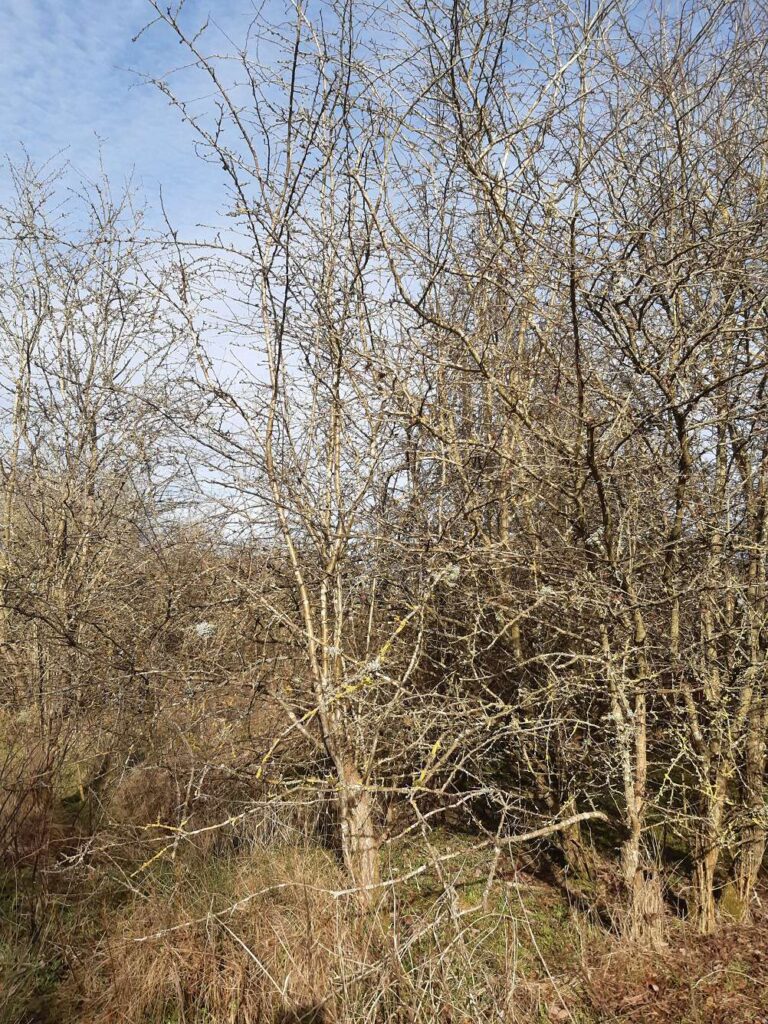



Well, where can you see swamps, meadows, wild flowers, scrub, woodland, lakes, riverside, rough grassland, and even a Victorian monument, all in an hour’s walk, and in easy reach of London? Wraysbury is the answer.
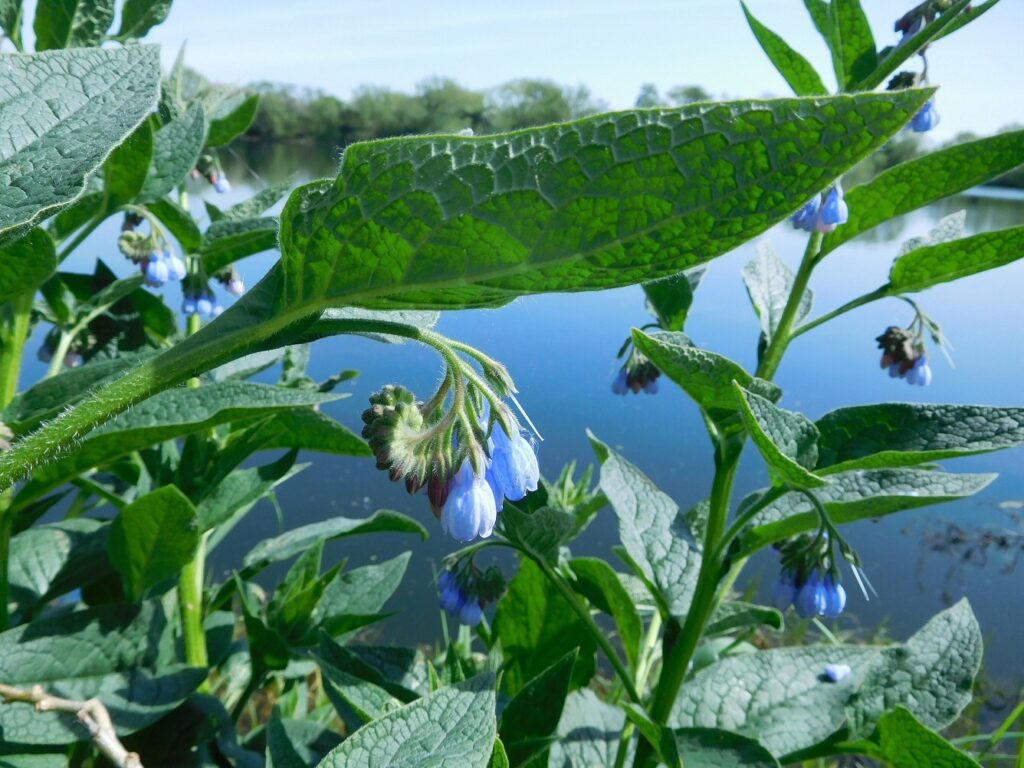
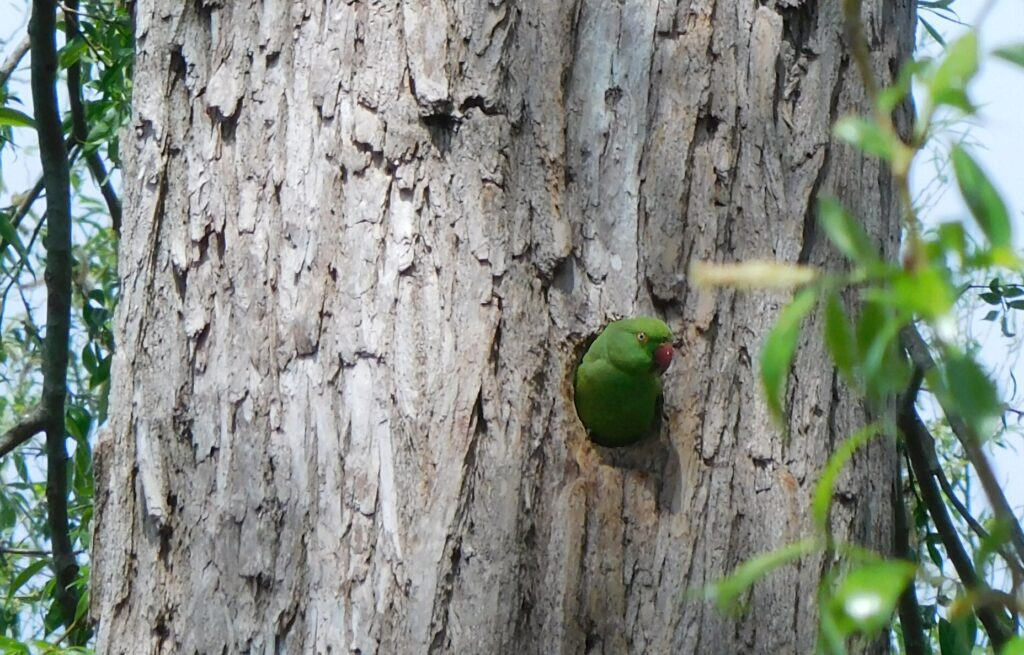
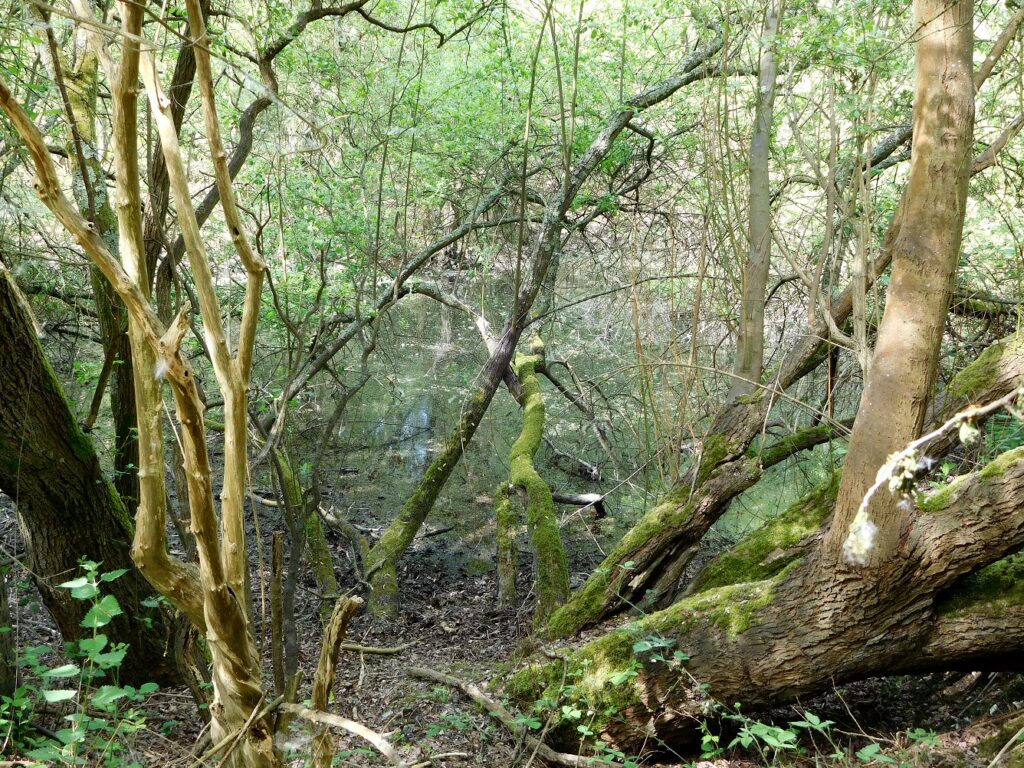
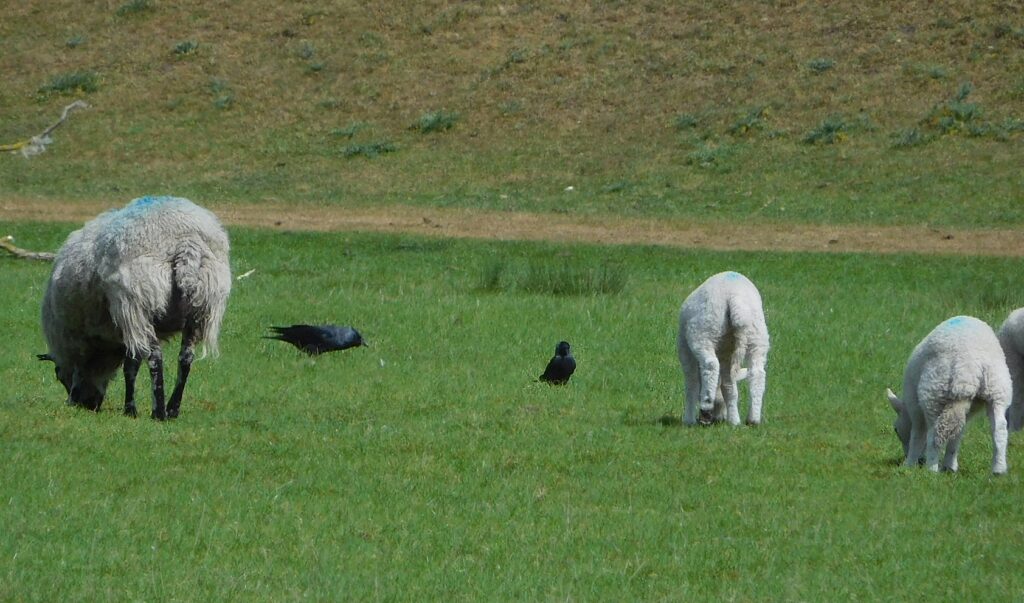
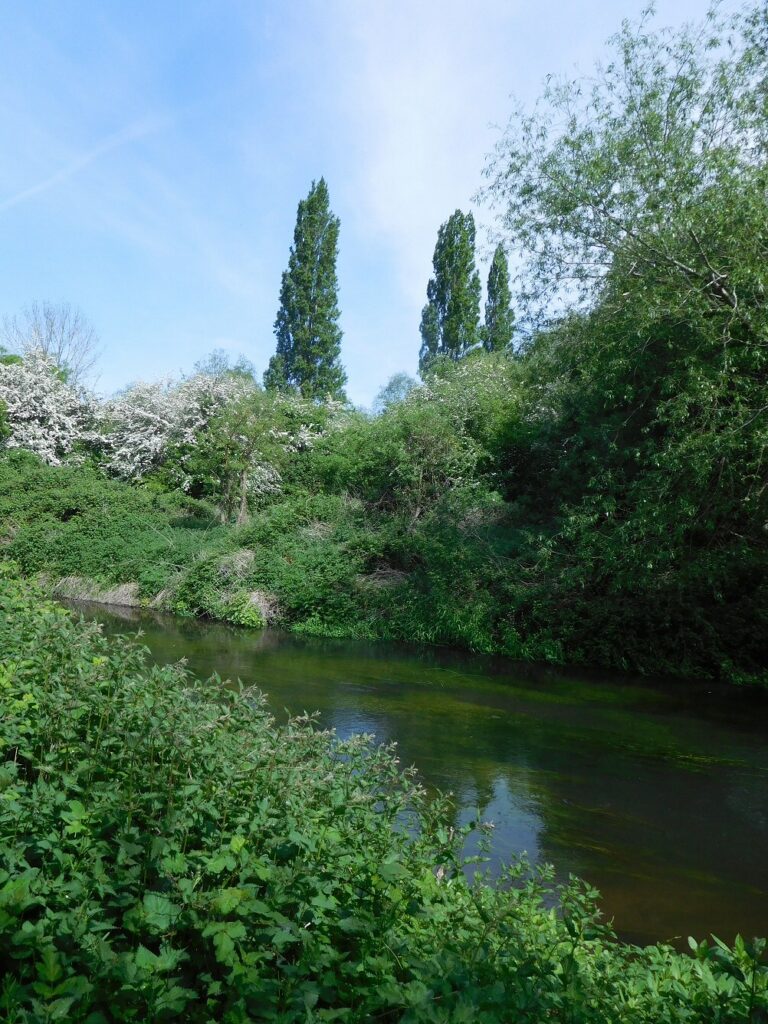
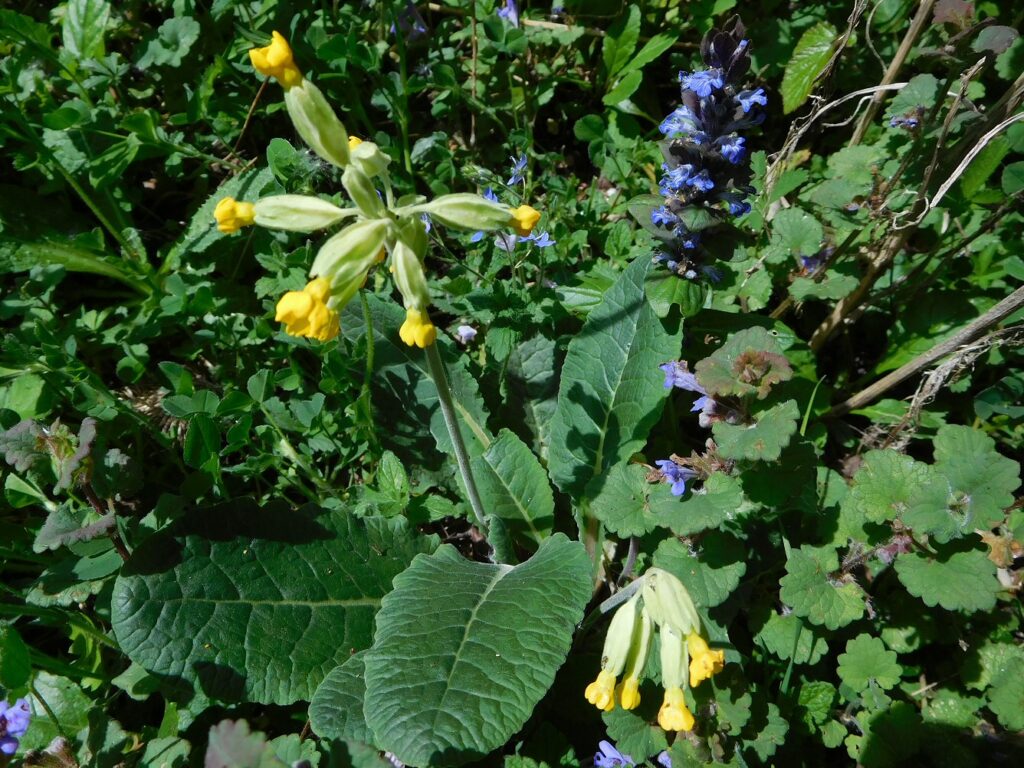
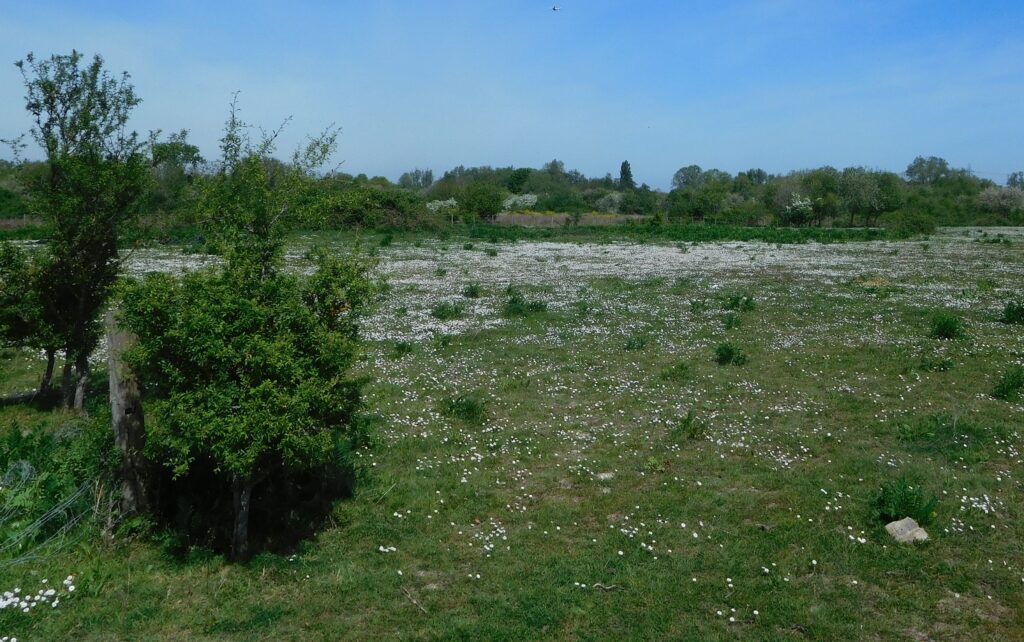
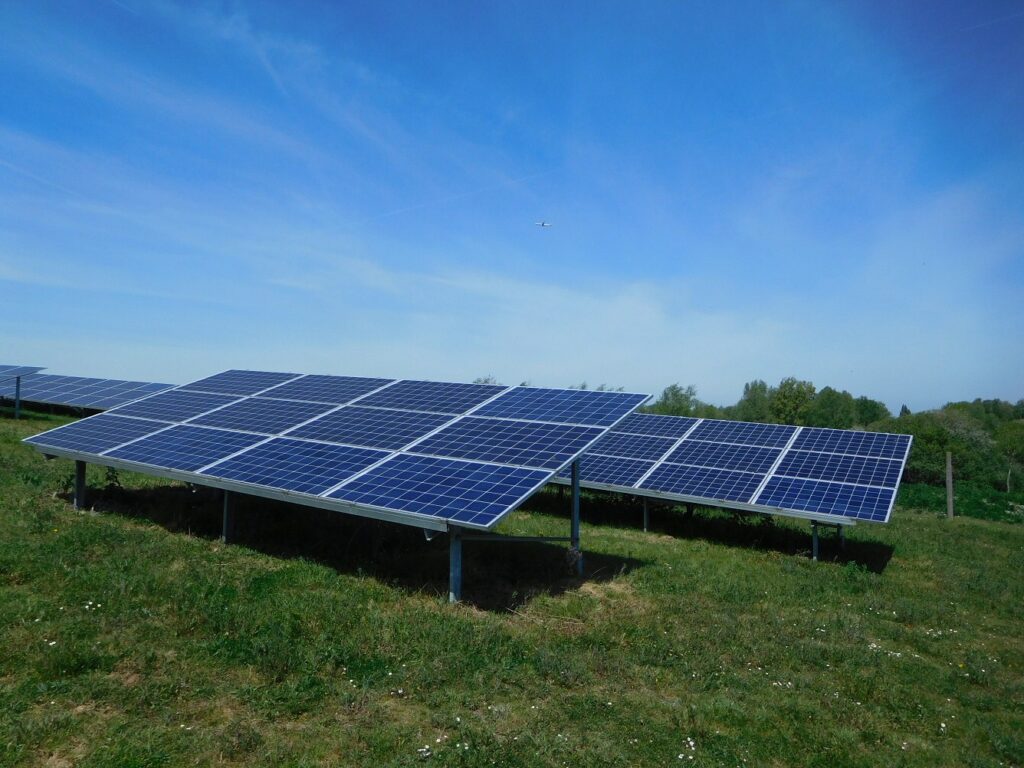
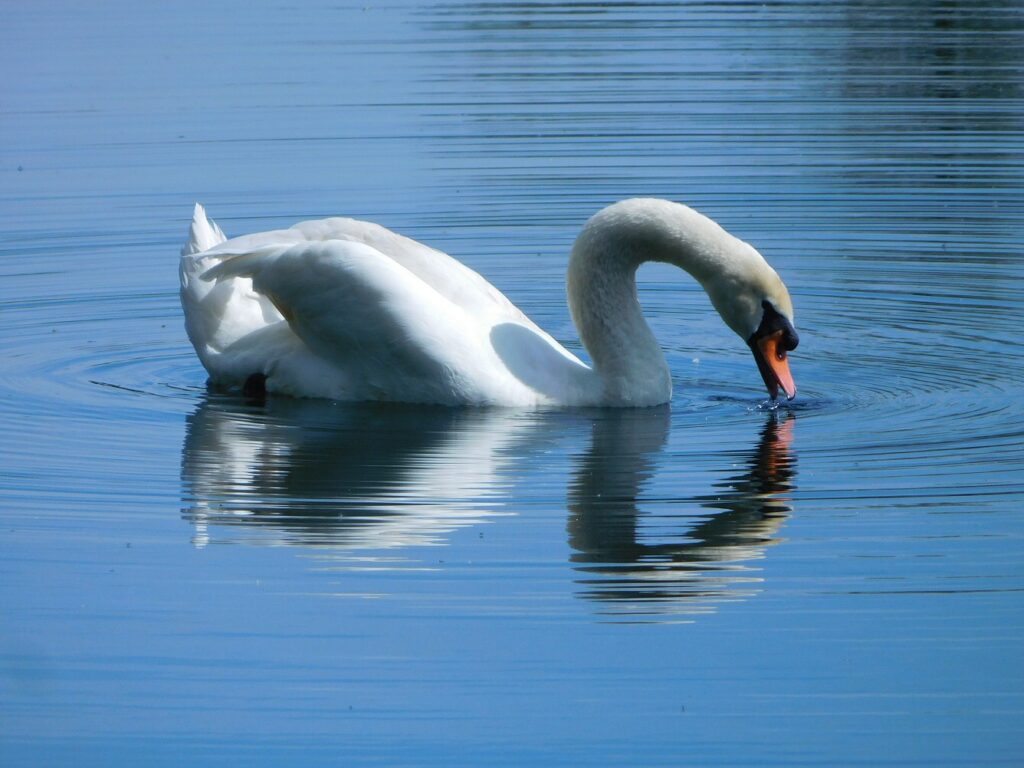
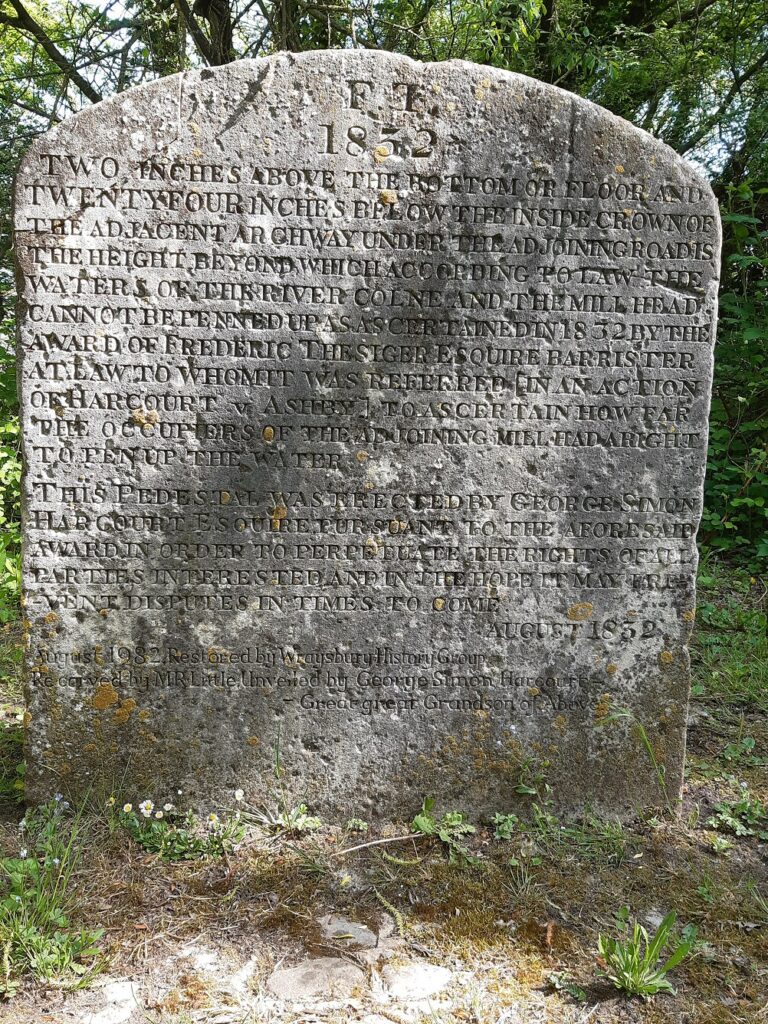
I don’t know if I’d set this in stone, but I heard 5 warblers singing, and caught a typical glimpse of a Cetti’s warbler diving from a bush beside the lake – big, dark brown, it really wasn’t any other bird. Still, I didn’t hear it call, which would have decided the matter beyond reasonable doubt. So, a 5-and-a-half warbler walk, I guess.
Butterflies: Large white, Small white, Brimstone, Holly blue, Peacock, Speckled Wood.
Odonata: Banded Demoiselle, Common blue (teneral, i.e. just emerged).
Other insects: Mayfly, Alder fly.
On the way home, I went round Heathrow airport, and a Skylark sang to me through the open car window from the grassy areas beside the runways.
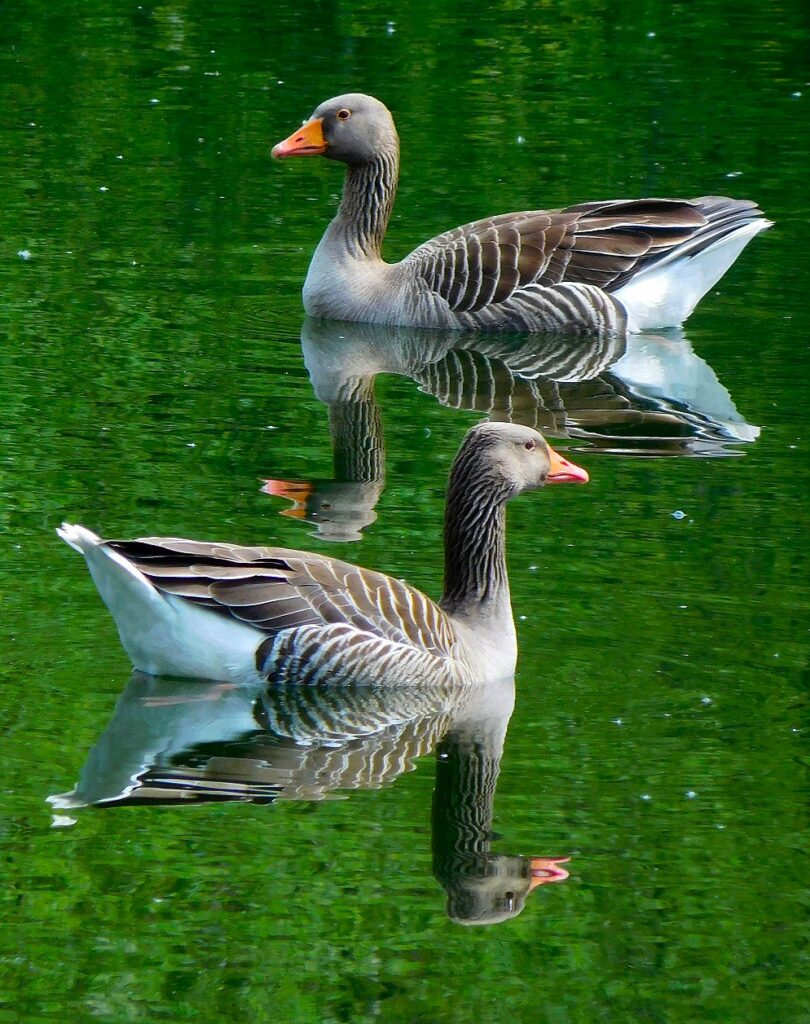
Well, I guess the point of a walk in nature in May is to see what is in flower, what birds are singing, and which insects have emerged (in other words, it’s all about sex). The first warbler to make itself heard was the Blackcap, with many singing males trying out different brief songs. They were mixed in with Garden Warblers, which have a distinctly longer and more even song. A Cetti’s Warbler or two sang their loud abrupt call chwitipitit, chwitipitit: once heard, never forgotten. I couldn’t find any Sedge or Reed Warblers by the river for some reason. In the thorny scrub, a couple of Chiffchaffs sang their names, and many Whitethroats rasped out their short scratchy song, flying up to the tops of Hawthorn bushes and hopping about for the optimal perch.
A Little Egret flapped slowly across the lake: it would once have been thought a wonderful sighting, but the species has happily spread northwards and is now quite common on British coasts and lakes.
I was however delighted to hear the wheezing spring call of a male Greenfinch. It was until recently a common bird around towns and villages, but the population was halved by the Trichomonas parasite in the 2000s. Here in London it almost completely disappeared, and it is only slowly recovering.
I glimpsed one damselfly, probably a Common Blue.
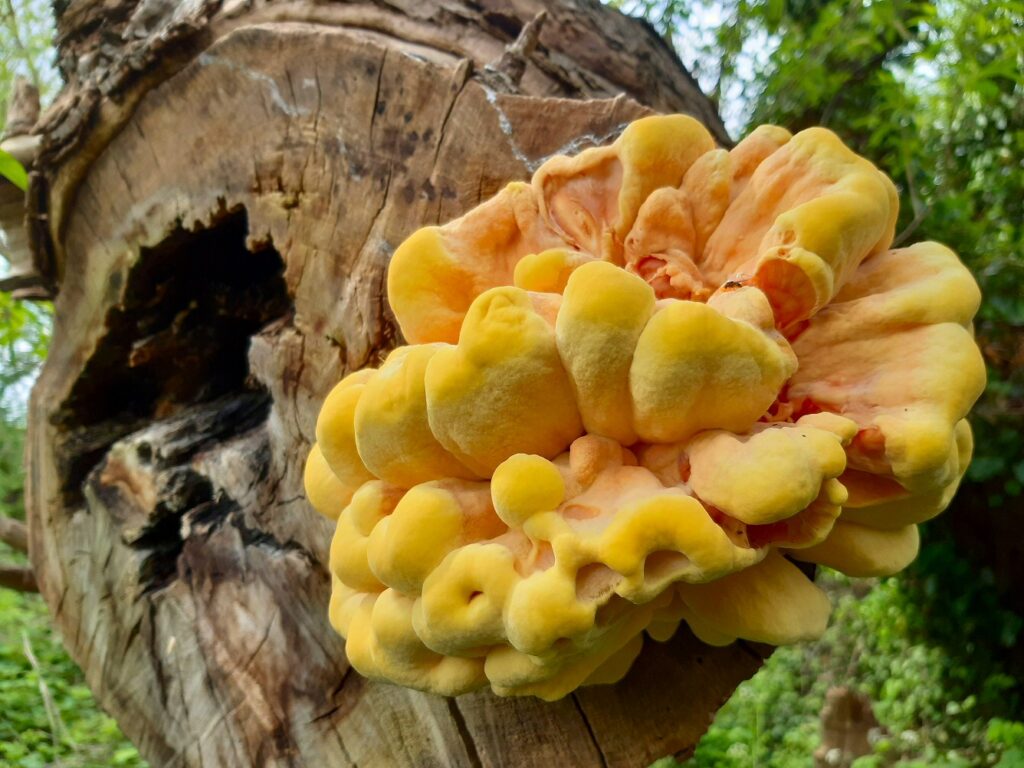
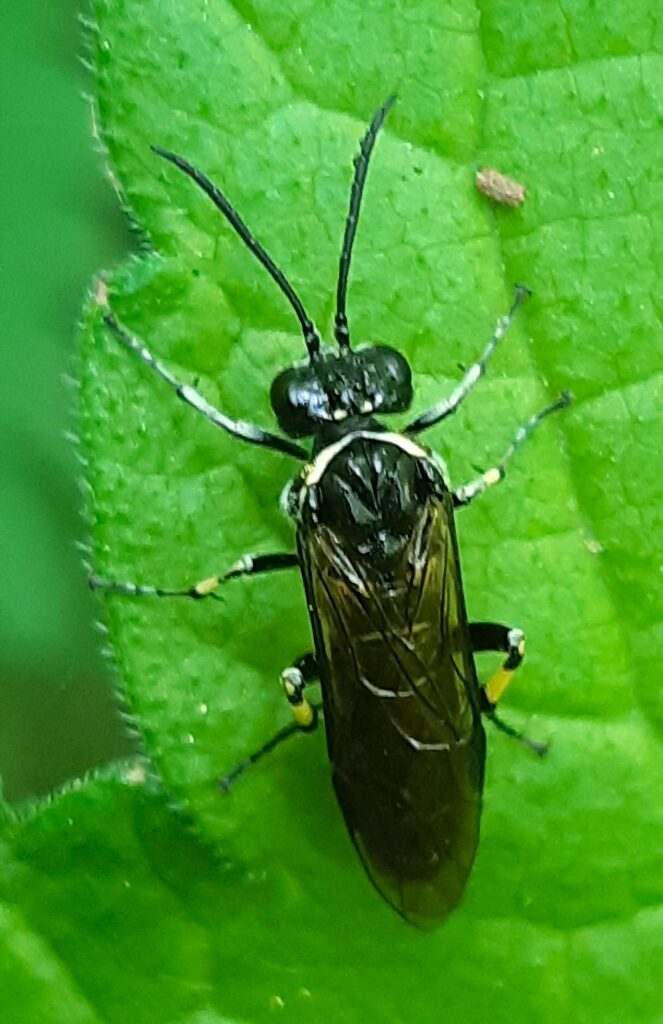
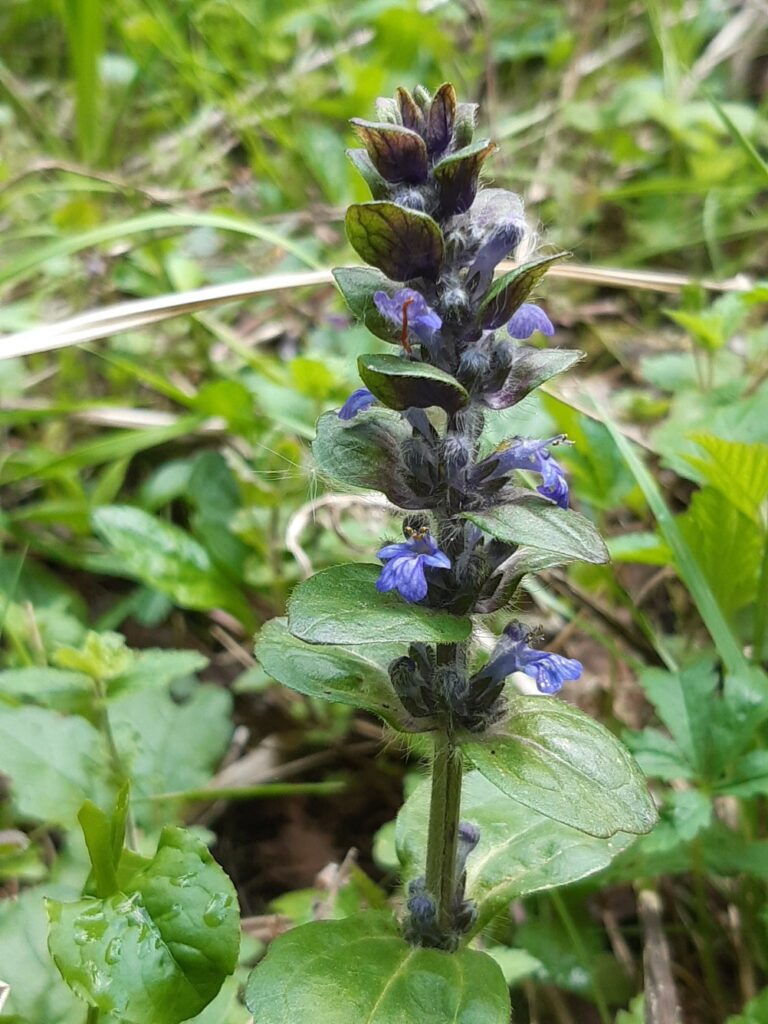
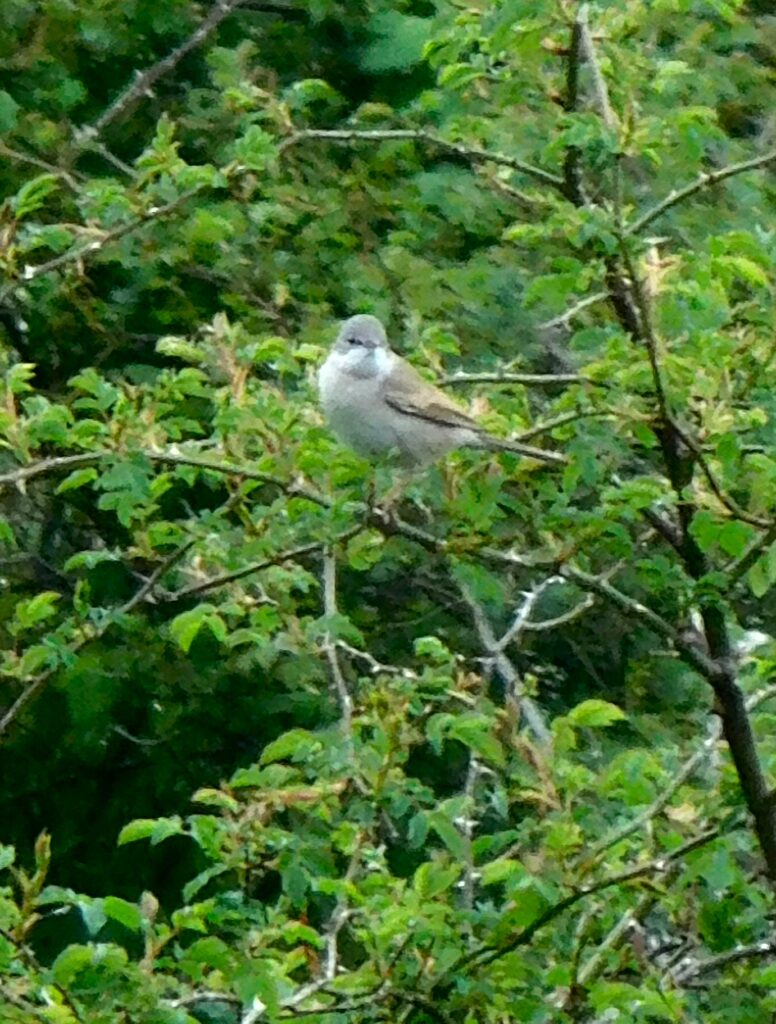
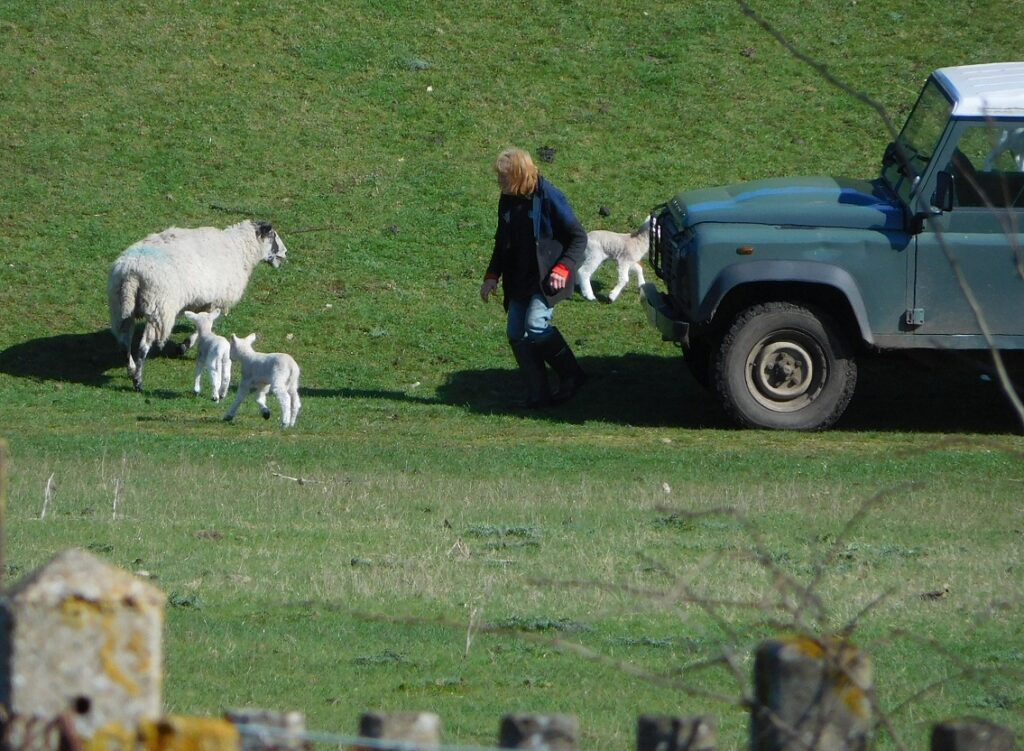
Also on the walk, several Brimstone butterflies, and a couple of Peacock butterflies (presumably overwintered in a hollow tree or some such place). Near the sheep were two Buzzards and a Red Kite, on the lookout for some carrion, I won’t mention what they were hoping to find. Also about was an early Chiffchaff singing its simple song (its name, over and over), a Cetti’s Warbler, and a Song Thrush. And a flock of Goldfinches finishing up the last of last year’s seeds in a big patch of thistles, burdocks, and teasels.
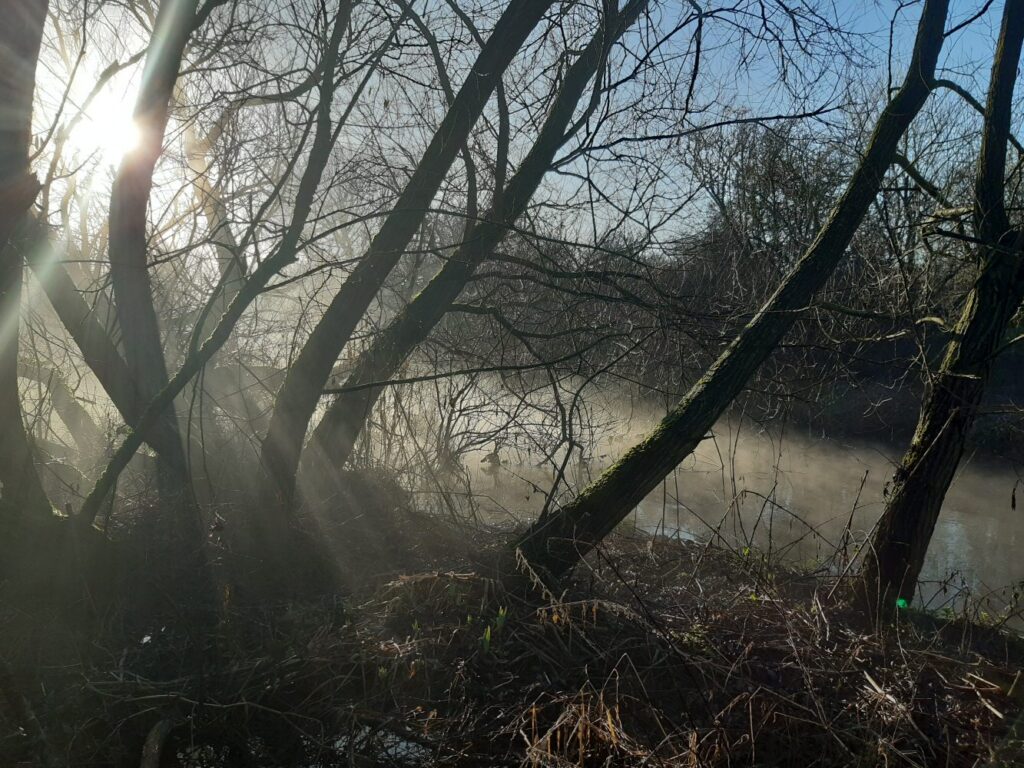
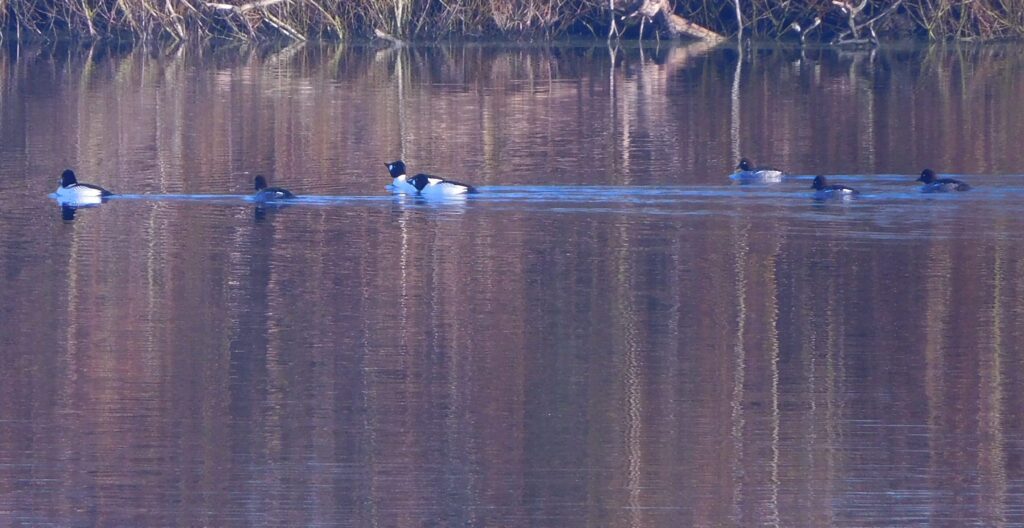
Among the wonderful moments on this walk: a heron gave its cronking call and flapped slow over the water; a plane passed behind three cormorants drying their wings, perched on the branches of a dead tree; a group of goldeneyes panicked and pattered across the lake, gaining speed for takeoff, giving their high-pitched call, the waves sparkling in the slanting sunshine; a song thrush tentatively singing its repeated music; a solitary fieldfare.
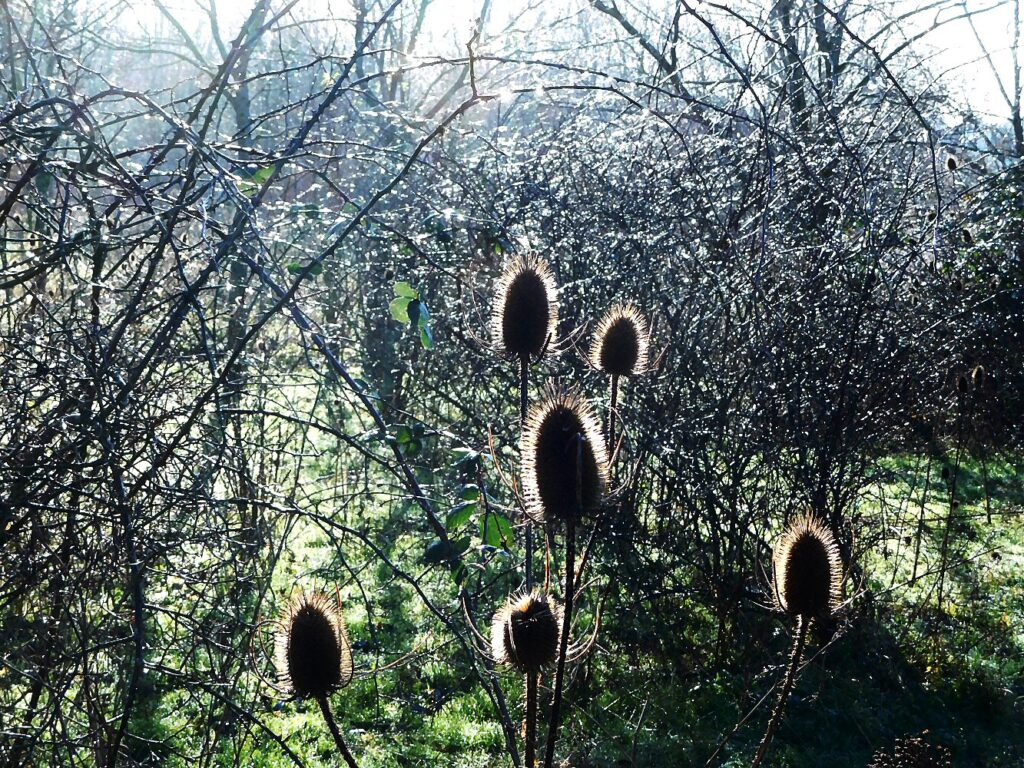
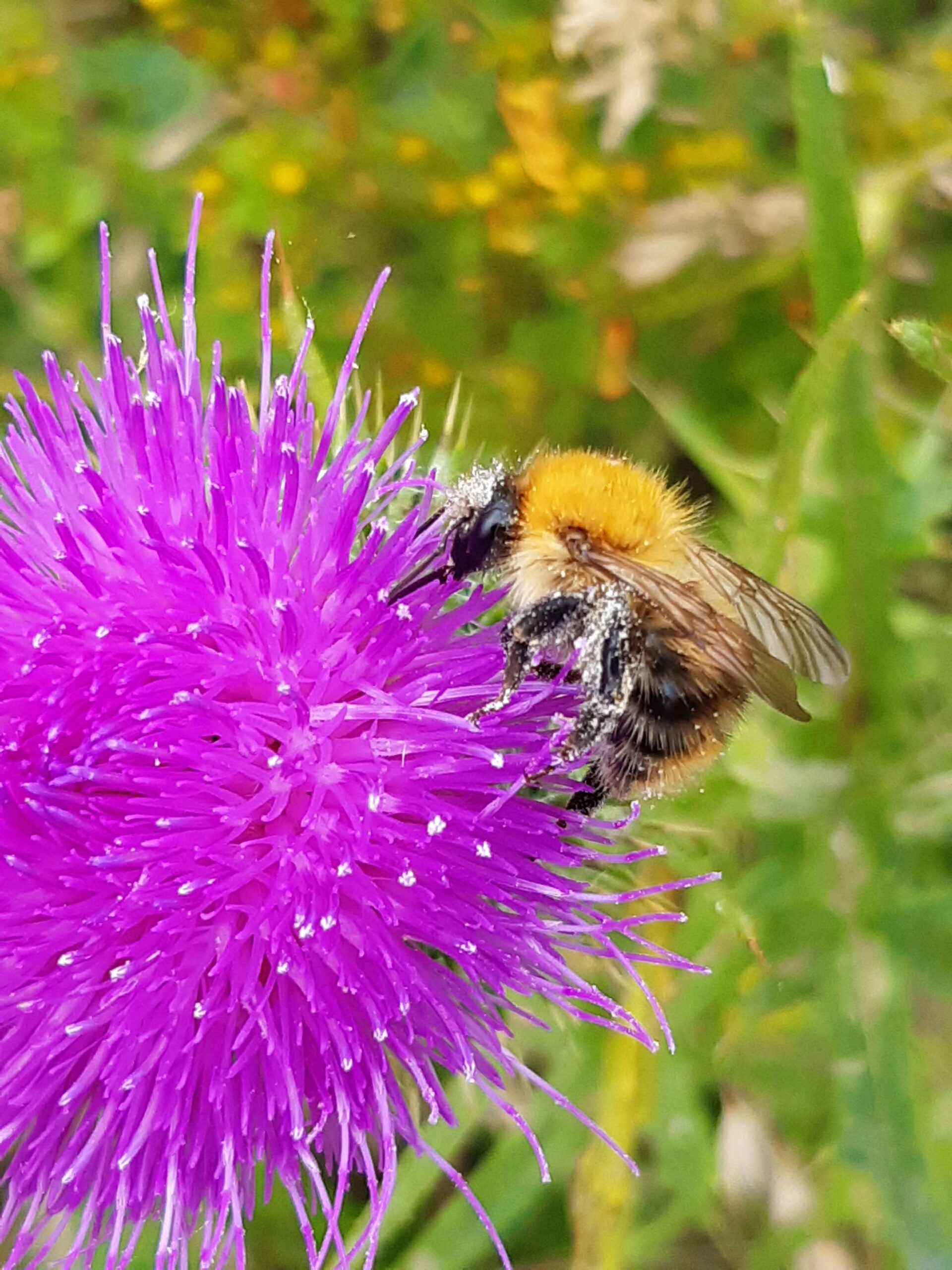
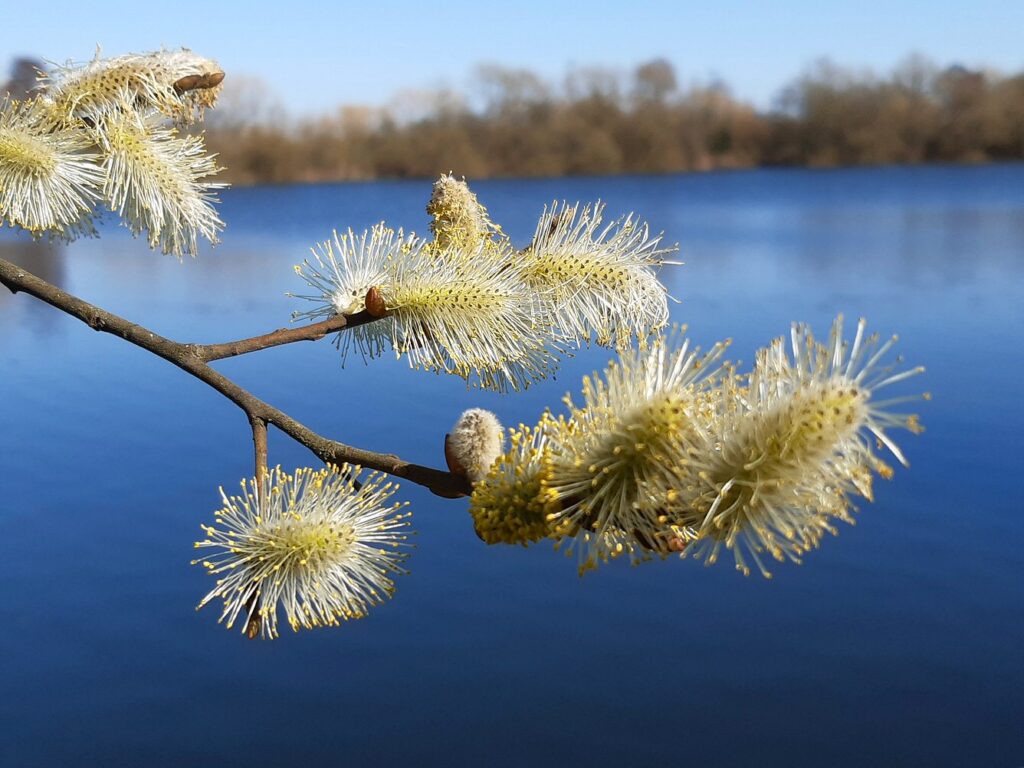
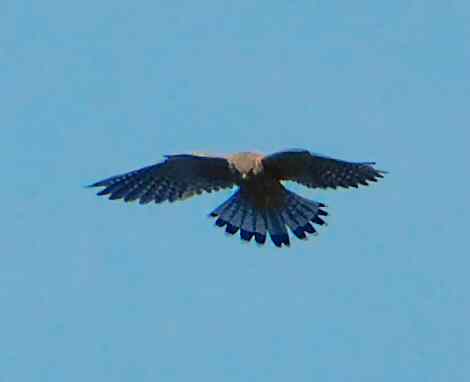
A Kestrel hovered persistently in the steady breeze, starting above treetop height and dropping lower in little steps, over the rough grass full of thistles, burdock, and teasels
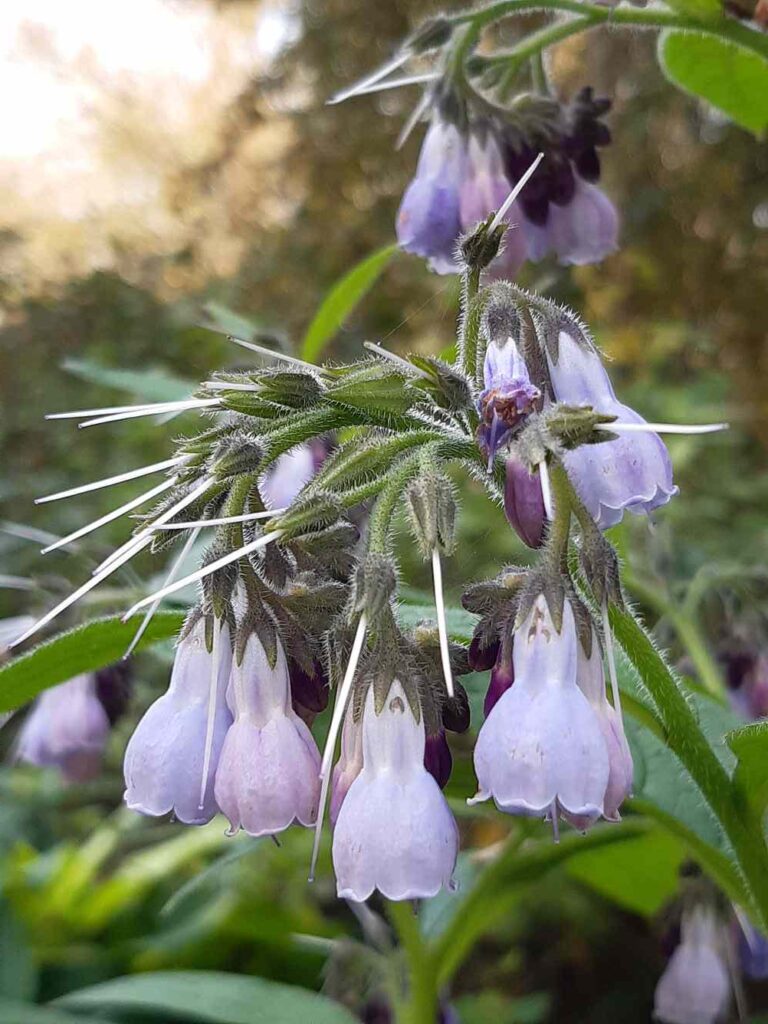
Comfrey, once used as a medicinal herb to knit bones, still in flower in October. A solitary Chiffchaff sang its simple song nearby.
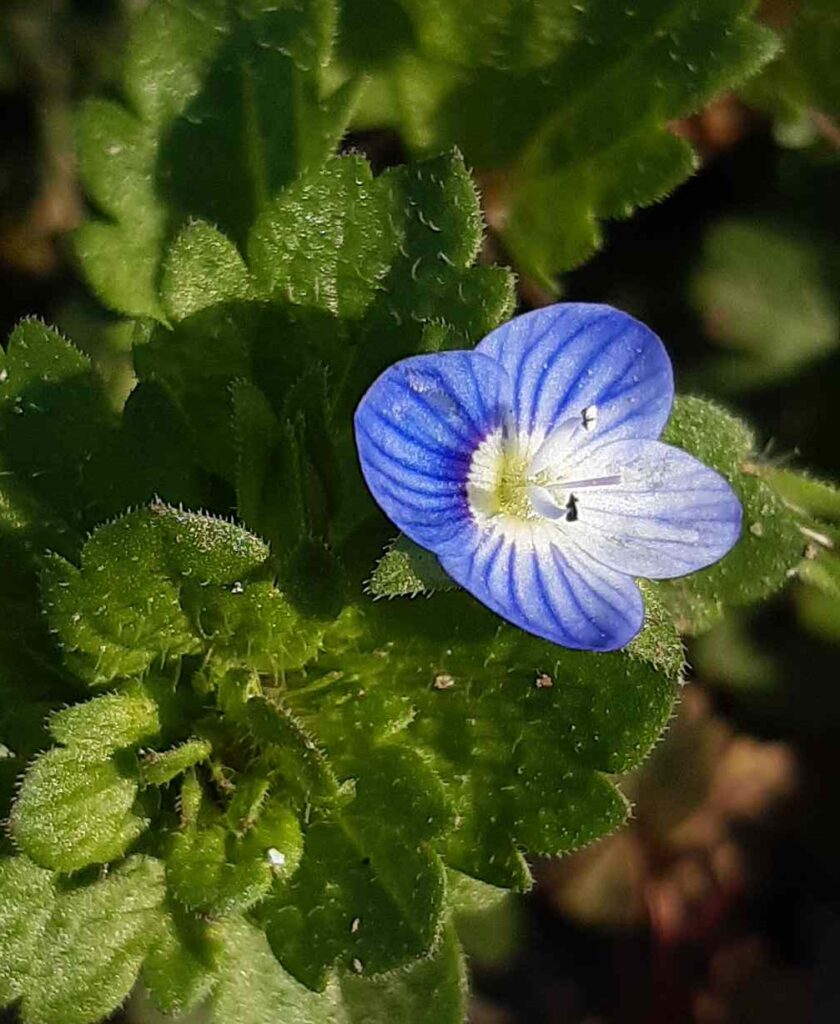
Germander Speedwell, a miniature beauty in bloom
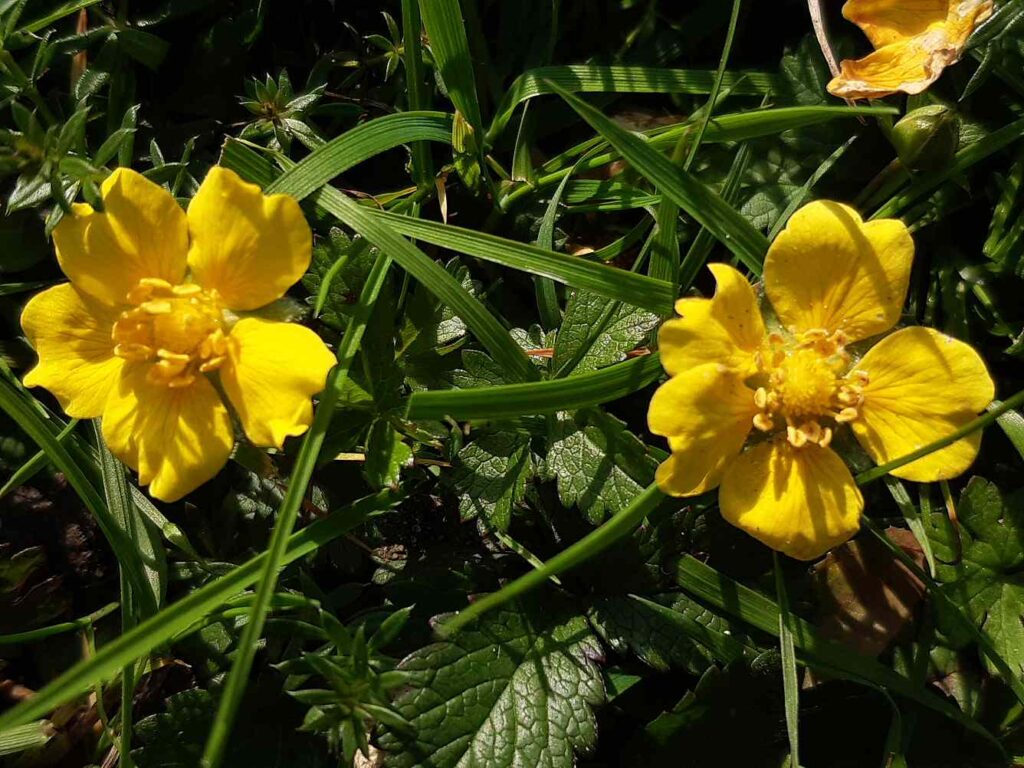
Creeping Cinquefoil, an attractively bright flower in clusters among the well-trodden grass of the path
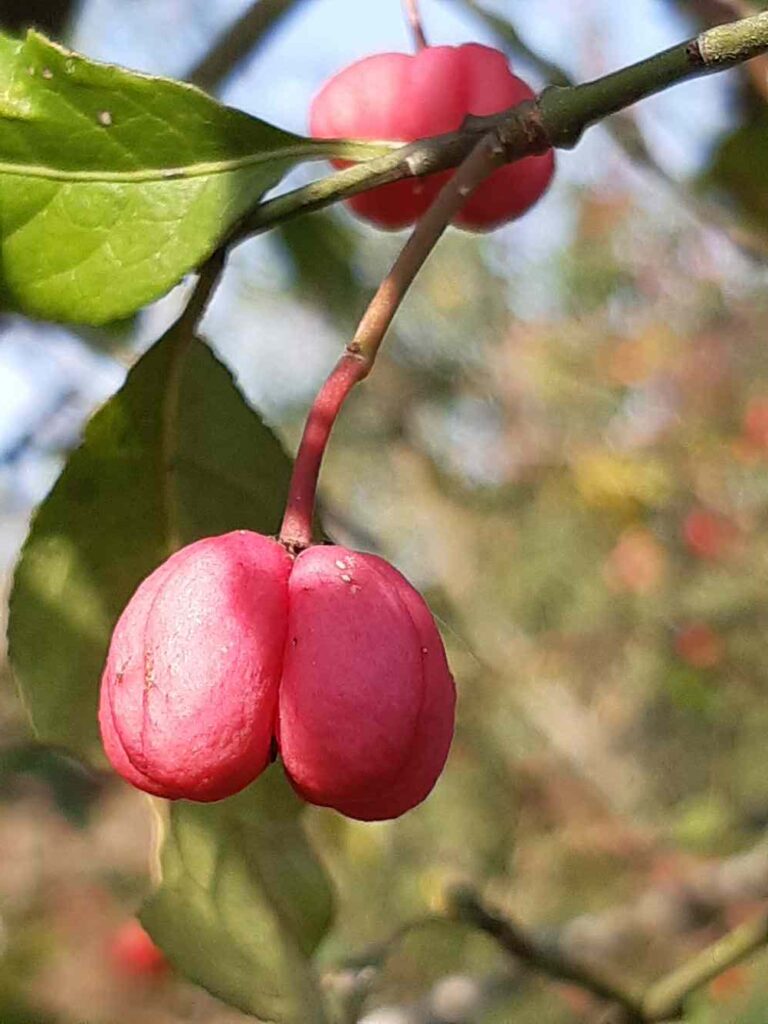
The extraordinary pink of the fruit of the Spindle Tree, a small slender tree with long and extremely straight twigs, that were ideal for medieval spinsters to use as spindles when spinning thread
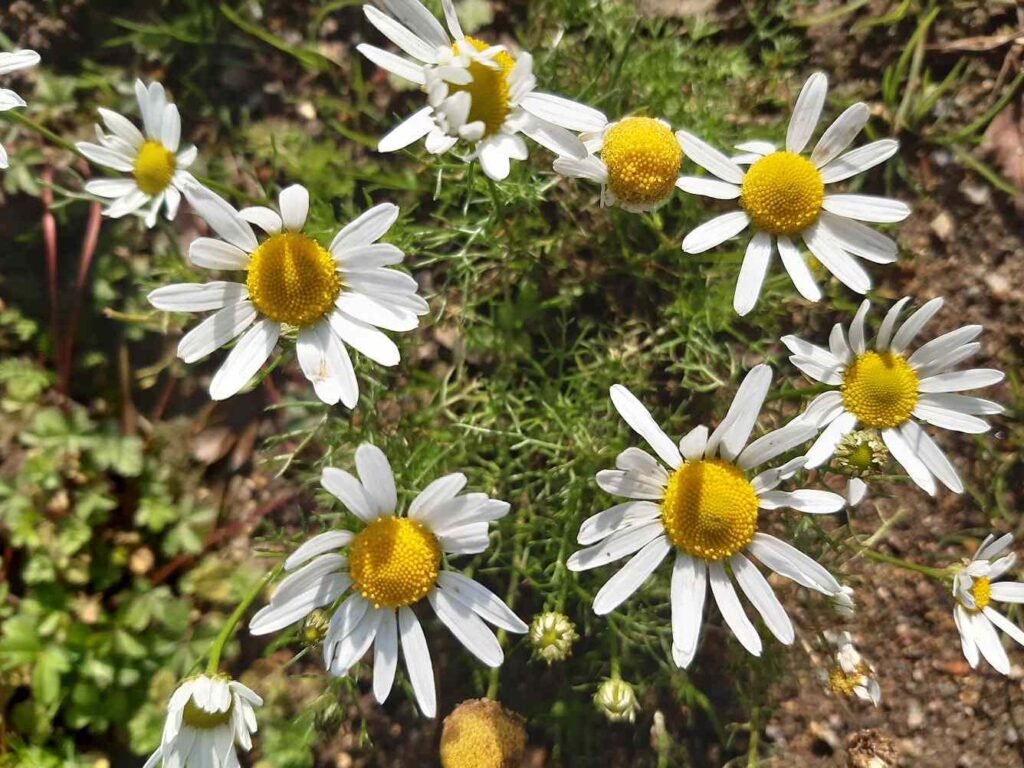
Scentless Mayweed, a cheerful flower of waste ground, common in the pony field. A twittering flock of Linnets flew into a bramble patch in the field, perching atop the bush and making little flights, apparently catching insects, before returning to their perches.
The presenters on Radio 4’s PM programme said that we needed an Awesome Nature Walk to lift our spirits during this renewed Covid Lockdown. Happily, we had already planned to go on one, and here it is: an Awesome Nature Walk at Wraysbury Lakes.
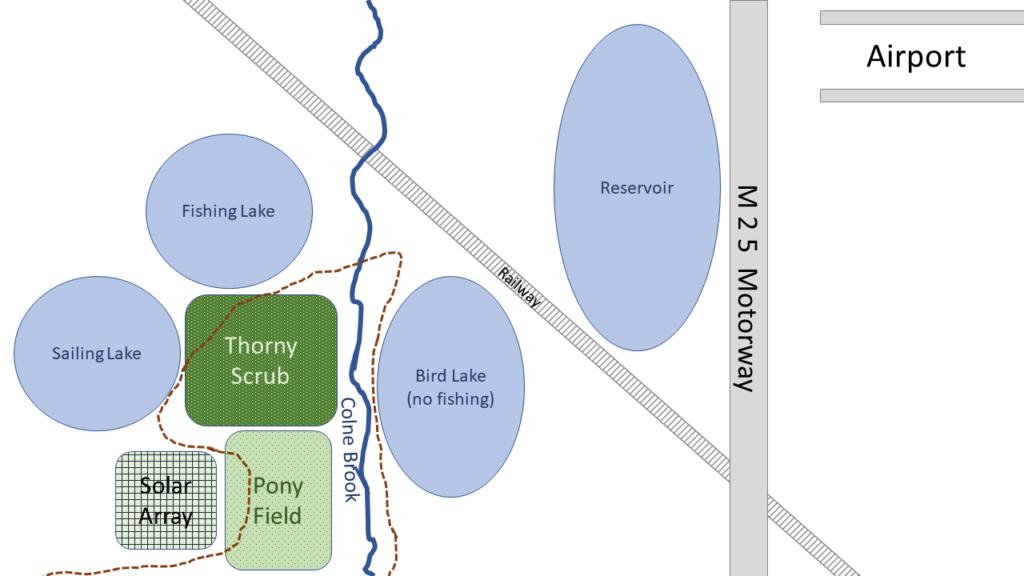
The walk begins near the road bridge over the Colne Brook at the bottom of the map, which is by a repair garage. I’ve drawn the sketch map to give something of the feeling of the route while I’m walking it, rather than attempting to make an objective map.
The area is just outside the M25 ring motorway that informally defines London’s boundary; Heathrow Airport is just inside that, so in normal times (hmm) there is a plane overhead every 90 seconds. Down on the ground, there are numerous lakes which all started life as gravel pits. The River Thames laid down great amounts of sand and gravel in its wide flood plain during the Pleistocene, and the various Flood Gravels now form valuable building materials. Extraction round here has finished, but there are active pits a bit further afield. The pits go below the water table so they fill up by themselves. The large Reservoir is a bit different – it has an enormous high earth bank all around it, so the water level is high above the surrounding ground level (maybe there was gravel extraction there too before the Reservoir was built). A railway runs across the area; it can be crossed at a pedestrian level crossing with a pair of stiles and a lot of looking both ways. To the south of the lakes is an attractive area of thorn scrub with Hawthorn, Dog Rose, Spindle, Bramble and suchlike, with quite a few trees, all very good for wildlife. Down by the lake edges and the Colne Brook are many large Willows and Poplars which grow quickly, lean over, fall, and sprout up anew, forming a constantly-changing cycle of growth and regeneration, and providing cover and roosting-sites for warblers and water-birds.
The lakes have variously been repurposed – one is used by the sailing club, though I more often hear the clatter of rigging vibrating against sail-less masts on windy days than people actually sailing. Another is a strictly private fishing lake, protected by fierce signs and fiercer fences which must have cost a fortune to put up. The lake by the start of the walk is open to wildlife and fishing is forbidden; a delightful trio of icons make it clear that running with a large carp under your arm is forbidden, as is spear-fishing (or is that a black line crossing out a standing fisherman diagonally); frying fish on a griddle is not allowed, though nothing is said about making fish stew in a saucepan, interpret the icon how you will.
South of the scrubland is a pleasantly scruffy pony-field with scattered thorn-bushes and rough grass dotted with tufts of Alfalfa. It rises to a low hill which was once a municipal landfill dump. For some years the dump was grassed over and the ponies roamed all over it; then men came and installed deep pipes to sample and carry away the presumably polluted groundwater; finally, a sizeable array of solar panels was installed and fenced off, complete with security cameras, so ponies and walkers had to make a detour around the array.
So — airport, motorway, gravel-pits, railway, landfill, post-industrial leisure activities, it’s pretty much the classic Urban or Peri-Urban nature area.
The bridge over the Colne Brook offers a glimpse of calm nature; the water babbles softly among the waterweeds, and two Kingfishers dark on triangular wings just above the surface. One swerves into a U-turn, catching the sun to reveal its brilliant blue-and-turquoise plumage. What a moment to start a walk.
We dive gratefully down the few steps from the pavement to the path: the pavement by the bridge is half-occluded by unclipped bushes, and the traffic whizzes past perilously close to unwary walkers.
In the sudden quiet we peer through the trees to the lake. A gang of twenty Cormorants is on the water, with a group of Mute Swans.
The path is bordered with Willows and coarse herbs; a patch of colourful Comfrey, once used to help knit broken bones, attracts some Common Blue Damselflies. At a gap in the Willows, a Cetti’s Warbler sings its abrupt, loud song. Some Migrant Hawker Dragonflies scoot too and fro beside the water, their transparent wings whirring, their long slender bodies glittering blue.
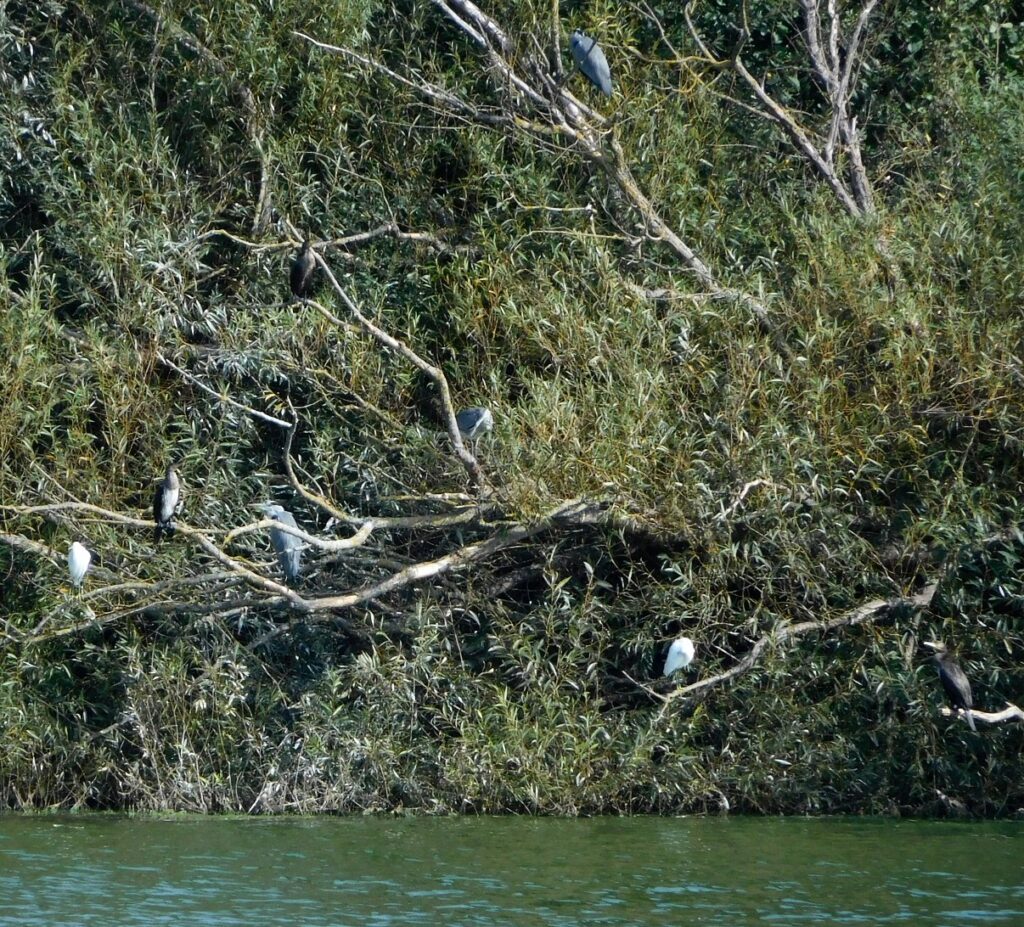
We come to a patch of reeds where we can see right across the lake. A Chiffchaff flits between bushes. On the far side is a bank of Willows, several with protruding dead branches. Perched on these are a few Grey Herons, half-a-dozen Cormorants, and most excitingly three Little Egrets — small white herons with black legs and yellow feet: uncommon visitors here. All of these are predators, feeding on fish and small animals like frogs; the Cormorants fish by diving from the surface, while the herons stand by or in the water, looking out for prey.
The track through the thorny scrub is bright with Rose and Hawthorn fruits — “Hips and Haws” in the fine old country phrase, rich with double entendre, glowing in different shades of red. Across a wide patch of Teasels and Burdocks and Thistles, all tall and prickly in their differing ways, more Hawthorn bushes are still in green leaf but bursting with red fruits, so they are red and green at once, which you might have thought impossible, but there it is, spectacular.
We swing through the kissing-gate and into the pony-field. The animals barely glance at us, the rich grass is clearly far more interesting. “Alfalfa” apparently means “King of Herbs” in Arabic; it was supposedly the finest pasture for grazing animals from goats to camels.
The path rounds the Solar Array; I guess it’s good to know that more and more of our energy is renewable, even if an Electric Vehicle, with its large price-tag, doubtful driving range, and complicated charging arrangements if like me and many city-dwellers, you don’t have a front drive to park and charge it on, is still perhaps a bridge too far. It does feel as if, with one more push, there could be charging points everywhere and affordable prices, and suddenly it’ll look not exotic but obvious. Five years, maybe? Who knows, but at least it’s coming.
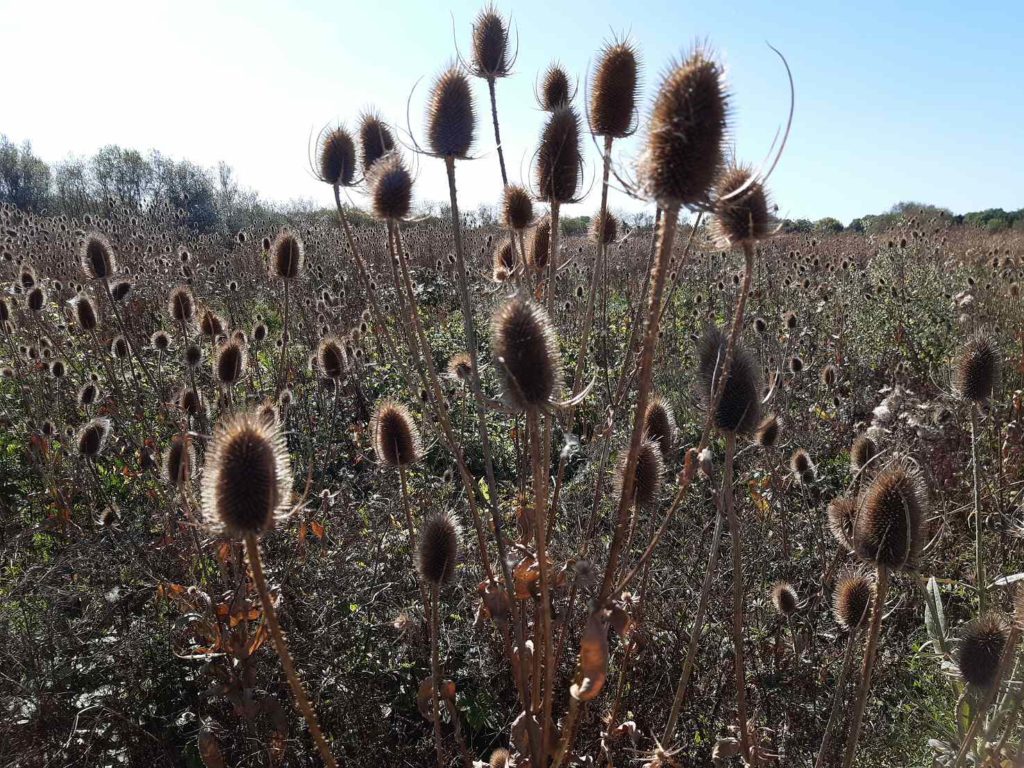
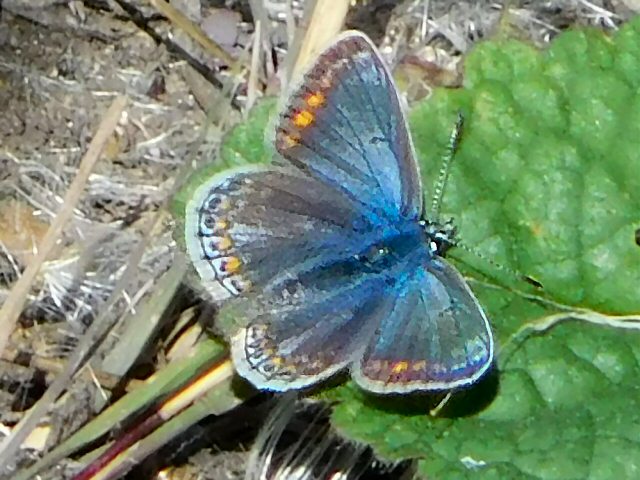
Glorious Indian Summer weather – 26C – in late September was too good to miss, so I strolled around Wraysbury Lakes in shirtsleeves. I was rewarded with the sight of plenty of Common Blue butterflies (the females brown); Greater Spotted and Green Woodpeckers; Cormorants, Little Egrets, and a Hobby gracefully searching for late dragonflies (Migrant Hawker, Common Darter) in the fine warm weather.
